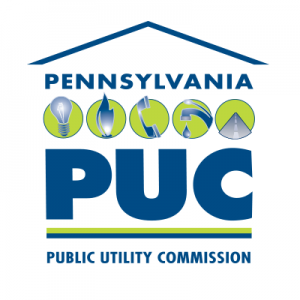Pennsylvania Gives Clean Energy Not One, but Two Boosts
 All industries use acronyms, but anyone who reads this blog can attest the electricity sector seems to have more than its fair share. One of these acronyms – TRC – stands for Total Resource Cost and represents the key means by which utilities measure the cost effectiveness of energy efficiency. Another – DR – is demand response, or a voluntary energy conservation tool that rewards people who use less electricity during times of peak, or high, energy demand.
All industries use acronyms, but anyone who reads this blog can attest the electricity sector seems to have more than its fair share. One of these acronyms – TRC – stands for Total Resource Cost and represents the key means by which utilities measure the cost effectiveness of energy efficiency. Another – DR – is demand response, or a voluntary energy conservation tool that rewards people who use less electricity during times of peak, or high, energy demand.
Getting each of these acronyms – and their associated clean energy resources – right is critical if we are to run our electric grid as efficiently as possible. Fortunately for Pennsylvania’s clean energy economy, the state’s Public Utility Commission (PUC) last week took a commendable step toward more fairly valuing both energy efficiency and demand response.
Why is the TRC important?
When a utility is considering whether to invest in anything from new transmission lines to smart meters, it needs to assess the potential costs and benefits of each investment. For those specific to energy efficiency, the analysis is done according to terms set by the PUC – otherwise known as the TRC. Previously, doing so meant measuring only energy saved, essentially ignoring all of the non-energy benefits like savings from the reduced need for fuel, water, and operations and maintenance. By underestimating these benefits, as a result, utilities have been discouraged to adopt efficiency programs, particularly comprehensive ones that go beyond simply replacing incandescent lightbulbs.
[Tweet “Pennsylvania gives #cleanenergy not one, but two boosts @PA_PUC”]
Fortunately, Pennsylvania Commissioners James Cawley and Pamela Witmer saw there was an opportunity to more accurately calculate all the benefits of energy efficiency, in addition to costs. The two proposed an amendment to allow non-energy benefits to be included in the TRC calculation – and it passed unanimously. The commissioners cited comments by Environmental Defense Fund and its coalition colleagues, including PennFuture, Keystone Energy Efficiency Alliance, Clean Air Council, Sierra Club, and Natural Resources Defense Council.
Demand response gets a leg up
This wasn’t the only recent win for clean energy at the Pennsylvania PUC. Commissioner Cawley and Chairman Gladys Brown introduced a separate amendment that allows demand response efforts to participate in both Pennsylvania’s alternative energy initiative (which seeks to reduce energy consumption and demand through establishing efficiency programs for utilities) and PJM’s Emergency Load Response Program (which provides a means to compensate people and businesses that reduce energy demand during emergencies).
Essentially, the measure makes it easier for people and utilities to trim electricity use during periods of peak demand when costs and pollution are high – a win-win for peoples’ pocketbooks and the environment. This amendment also passed unanimously, five to zero.
By more accurately measuring energy efficiency’s benefits and helping demand response get on a level playing field with other energy resources, these decisions advance Pennsylvania’s clean energy economy and accelerate the use of each in the Commonwealth. Furthermore, they put the state in a better position to comply with the Environmental Protection Agency’s proposed Clean Power Plan, scheduled for release this summer with the goal of cutting carbon pollution from existing power plants. As proposed, the plan will encourage the integration of more clean energy resources like energy efficiency and demand response, and states with forward-thinking approaches will be well-positioned to meet the requirements.
While the electricity industry may still be muddled with diverse and confounding acronyms, it’s clear Pennsylvania has a solid understanding of two of its most important ones: TRC and DR. And the unanimous PUC votes on each measure signal Pennsylvania recognizes the clean energy future and is working to ensure the state takes advantage of the opportunities at hand.
Photo source: Pennsylvania PUC











